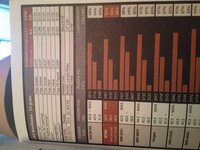Like Mark, I have well over 40 years of reloading experience. I am also a NRA reloading instructor. The basic reloading class that the NRA prescribes is eight hours in length, and that is enough to get you familiar with the basics of reloading. Just about everything you read about here and on other forums is experience gained by the various individuals, and can be valuable. BUT, as we teach in the class, it is a good idea to get more than one reloading manual, as the information offered can be varied while still being applicable. If you're starting out on this enjoyable past time, then try to keep things as simple as possible. I'm not hawking taking a class, as when I first started out I had very little instruction and a whole lot of questions. Have had a few missteps along the way, but I still have all my digits and have not damaged or destroyed any firearms. You will find some powder. Just keep an eye out. Incidentally, my avatar is exactly what you are looking to reload for. M28 S&W .357 Mag and a 1911 .45 Automatic. Both pretty easy to master.
I have two reloading manuals, the 49th Edition of the Lyman Manual, and the One Book/One Caliber for .357, which is sitting at the Post Office. I'll pick it up tomorrow. It's very likely I'll end up with another manual, particularly one for the bullets I'll use.
There is a ton of good info out there on YouTube and in the forums. I've learned so much, but I'm sure I'll have more questions and things to learn once I actually start reloading. I live way to remote from any population centers to take any classes.
I have a S&W Model 19 in .357 and plan on adding a Ruger Blackhawk in .357. Once I have some time reloading under my belt, the .45 ACP is the next cartridge I want to start reloading. I have a Sig P220 and a 1911, which I like to shoot too much to shoot expensive factory ammo, so loading .45 ACP makes sense. It also got me to thinking about adding a .45 ACP carbine to my collection. When will it ever stop.












